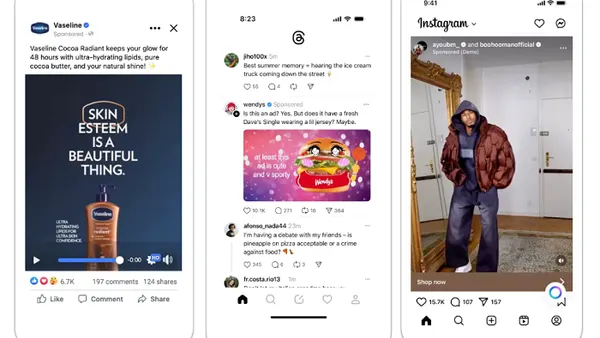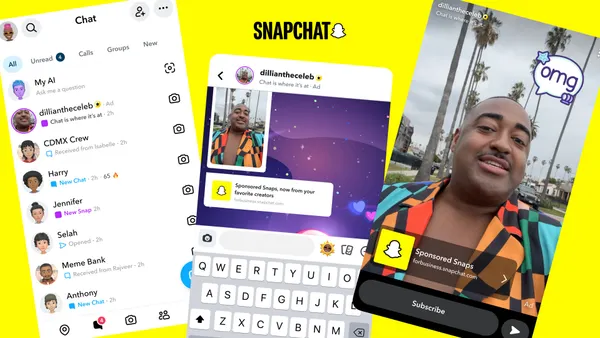Brief:
- Mobile apps had a record quarter in Q2 with 30.3 billion downloads and almost $22.6 billion in consumer spending — up 20% from a year earlier — in Apple's App Store and Google Play, researcher App Annie found. The mobile gaming category hit a record 11.2 billion games downloads, the researcher said in a separate report.
- While Google Play's downloads grew more rapidly than the App Store's, the App Store maintained its dominance in consumer spending. Google Play saw a 10% gain in downloads to 22.5 billion, widening its lead over the App Store by 15 percentage points from the prior quarter to 185%.
- Snapchat, YouTube and TikTok were the "breakout apps" for Q2, per App Annie. Snapchat's downloads surged with the release of new augmented reality (AR) filters and a faster Android mobile app, advancing three spots to rank at No. 3 among total downloads. YouTube moved up one spot into the top five by consumer spending as more mobile users paid for its ad-free features. ByteDance's TikTok moved two spots higher to rank No. 6 by the most monthly active users, behind WhatsApp, Facebook, Messenger, WeChat and Instagram.
Insight:
App Annie's data indicate the app economy is strong, especially as mobile games drive consumer spending. Games comprised 35% of global downloads in the quarter, but they generated 75% of consumer spending in the App Store and Google Play. India, Brazil and the U.S. were the biggest markets for game downloads on Google Play in Q2, per App Annie. The growing popularity of gaming is creating opportunities for marketers to reach highly engaged audiences with in-game ads. In the U.S. alone, spending on in-game ads will grow 16% to $3.25 billion this year from $2.8 billion in 2018, researcher eMarketer separately forecast.
The disparity between downloads and spending for the App Store and Google Play appears to be a byproduct of regional differences for the app stores. Apple's App Store has much higher consumer spending than Google Play, likely indicating the popularity of higher-priced iPhones among consumers in developed markets. Google Play has higher downloads because the Android operating system is more popular among a wider variety of mobile devices around the world, especially in emerging markets that tend to favor lower-priced handsets. App Annie's data show that India, Brazil and Indonesia were the top three markets for Google Play in terms of total downloads and year-over-year growth in Q2 2019.
Meanwhile, App Annie's data show slight differences from researcher Sensor Tower, which last week published data on the first six months of the year. App Store revenue climbed 13% to $25.5 billion, compared with Google Play's 20% gain to $14.2 billion during the period, Sensor Tower estimated. Both researchers said dating app Tinder was the highest-grossing non-game app for the respective periods. Tinder overtook Netflix after the video-streaming giant removed subscriptions from the app's iOS version in December to avoid the App Store's fees.
App Annie's rankings show positive trends for social apps Snapchat, YouTube and TikTok. Snapchat has made significant efforts to boost its user base and engagement with the release of an improved Android app, its first partner summit to strengthen ties with content creators and the release of AR lenses, triggering a strong surge in downloads.
YouTube boosted consumer spending, although the app is shifting strategies to avoid direct competition with video streaming giants Netflix and Hulu. YouTube next year will remove its paywall for original programs and will shift to an ad-supported strategy, The Los Angeles Times reported. TikTok, which is notable for being the only top five app that isn't owned by Facebook, is working to build out a strategy to monetize its quickly growing audience. The social video app, which is owned by Chinese tech giant ByteDance, this month partnered with four North American ad agencies to hone its marketing strategy.











